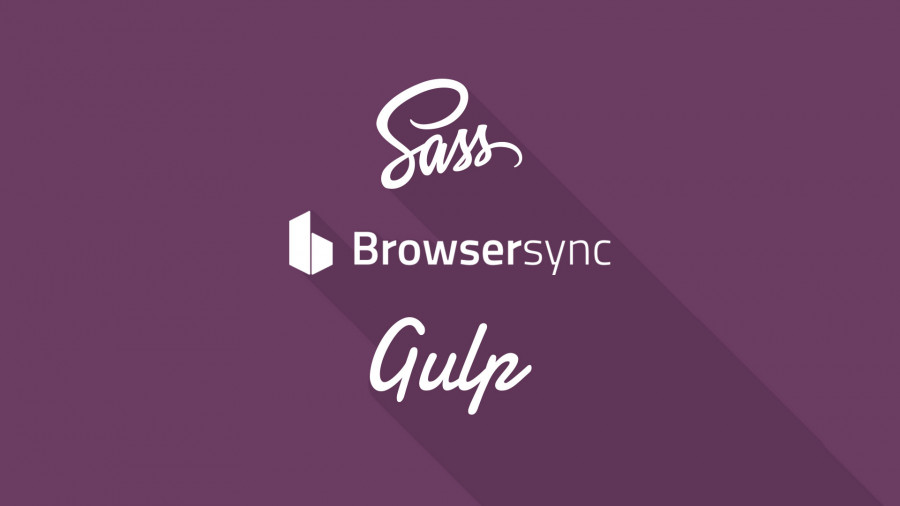Building drupal 8 themes using gulp, sass and browsersync

Build systems provides a great way to automate common tasks that theme developers perform on a daily basis. One of the most prevalent tasks that developers do is refresh their browser/s after they've made some changes or use one of the available preprocessors to compile their CSS files. Build system provided alongside this theme is based on a build system called Gulp. Gulp is responsible for starting up the Browsersync with it's capabilities to live reload any styles compiled by Sass compiler. Build system is also capable of building a development versions of CSS files, including sourcemaps and building a production versions outputing CSS files with vendor prefixed rules for wider css3 features support.
Gulp (http://gulpjs.com/)
The official website says it's the streaming build system but it could also be referred to as a task runner. By tasks we can assume anything that can be done manually and is repeatable by nature. Some of the most common tasks done when building a Drupal theme involves:
- compiling Sass into CSS,
- minifying, concatenating CSS and JavaScript
- optimizing images etc.
Sass (http://sass-lang.com/)
Sass is a meta-language on top of CSS that’s used to describe the style of a document cleanly and structurally, with more power than flat CSS allows. Sass both provides a simpler, more elegant syntax for CSS and implements various features that are useful for creating manageable stylesheets.
Browsersync (https://www.browsersync.io/)
With each web page, device and browser, testing time grows exponentially. From live reloads to URL pushing, form replication to click mirroring, Browsersync cuts out repetitive manual tasks. It’s like an extra pair of hands. Customise an array of sync settings from the UI or command line to create a personalised test environment. Need more control? Browsersync is easily integrated with your web platform, build tools, and other Node.js projects.
1. Requirements
1) System capable of running Node.js (OS X, Linux, Solaris, FreeBSD, OpenBSD, Microsoft Windows)
2) Node.js
2. Installing Node.js
Depending on the environment Node.js can be installed from distribution repositiories if used on Unix or Unix like operating systems, from packaged binary installers for Microsoft Windows systems or compiled from the source files.
To see more and learn how to install Node.js on your environment please refer to: https://nodejs.org/en/download/package-manager/.
3. Installing Dependencies
Build system uses two separate utilities for managing theme dependencies. *NPM* (Node.js Package Manager) for build system itself, and *Bower* package manager for managing external Sass dependencies. By default there are couple of Sass libraries already preinstalled with your theme and these include:
- normalize-libsass (libsass version of normalize.css
(https://necolas.github.io/normalize.css/)),
- compass-mixins* (ruby compass ported to libsass (https://github.com/Igosuki/compass-mixins)),
- breakpoint-sass (library for working with media queries (https://github.com/at-import/breakpoint)),
- bootstrap-sass (bootstrap framework for developoing responsive, mobile first projects on the web (http://getbootstrap.com/))
__*__ not all features of ruby compass are supported, please see the library documation for further information
3.1. NPM
3.1.1. Installing NPM
- NPM comes preinstalled with Node.js
3.1.2 Installing build system dependecies
To install Node.js dependecies please issue the following command at the themes root folder:
npm install
3.2. Bower
3.2.1. Installing Bower
Bower can be installed using NPM by issuing the following command:
npm install bower -g
3.2.2. Installing Sass Dependecies
To install Sass dependecies please issue the following command at the themes root folder:
bower install
4.Configuration
Depending on the development preferences theme development can be done in one of the two following ways:
- local development,
- development against a live site
Build system provided with your theme comes with two predefined configuration files:
- config-local.js and
- config-live.js.
To start developing in a local environment please copy the provided **config-local.js** to **config.js**, or to start working with live environment copy **config-live.js** to **config.js**.
Please note that the live development is not modifying any of the files deployed to a live server but instead it is only *proxying* the calls through Browsersync.
5. Running the default task
Build systems comes with a default task which bootstraps the Browsersync to work in a *proxy* mode and sets up the Sass compiler to compile developer versions of CSS files after any change is made to original source Sass files.
To start the build system with a default task please enter the following command:
gulp
6. Compiling Sass files
Besides the default task build system comes with two more additional tasks used for compiling Sass source files to CSS. Task for compiling a development version of CSS (also used in building CSS in default task) and task for compiling a production version of CSS files. Depending of needs tasks can be run by issuing the following commands at the command prompt:
gulp sass:dev
Builds a development version of CSS files including sourcemaps for easier debugging of styles during development process.
gulp sass:prod
Builds a production version of CSS files without sourcmaps and is vendor prefixed using autoprefixer for wider support of css3 features.














